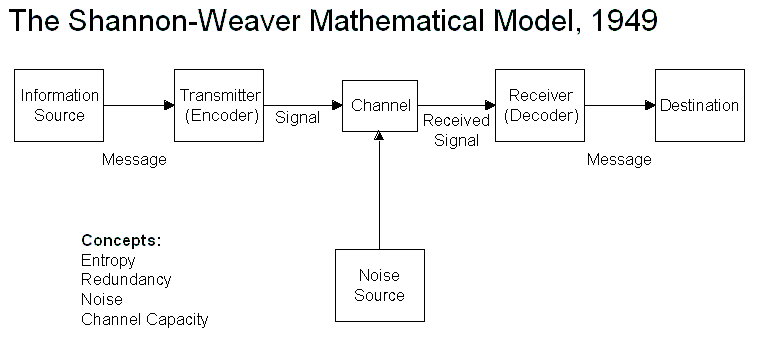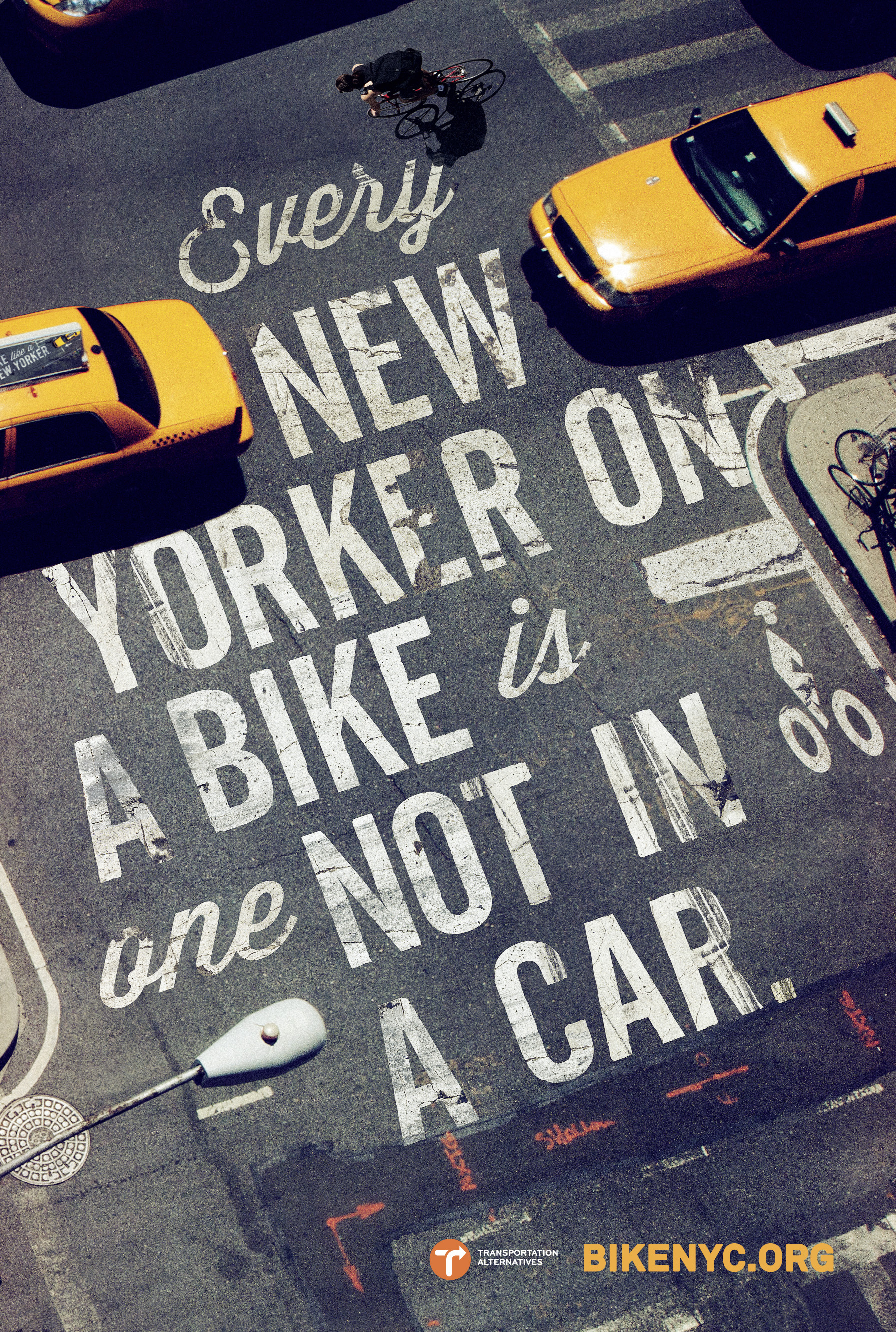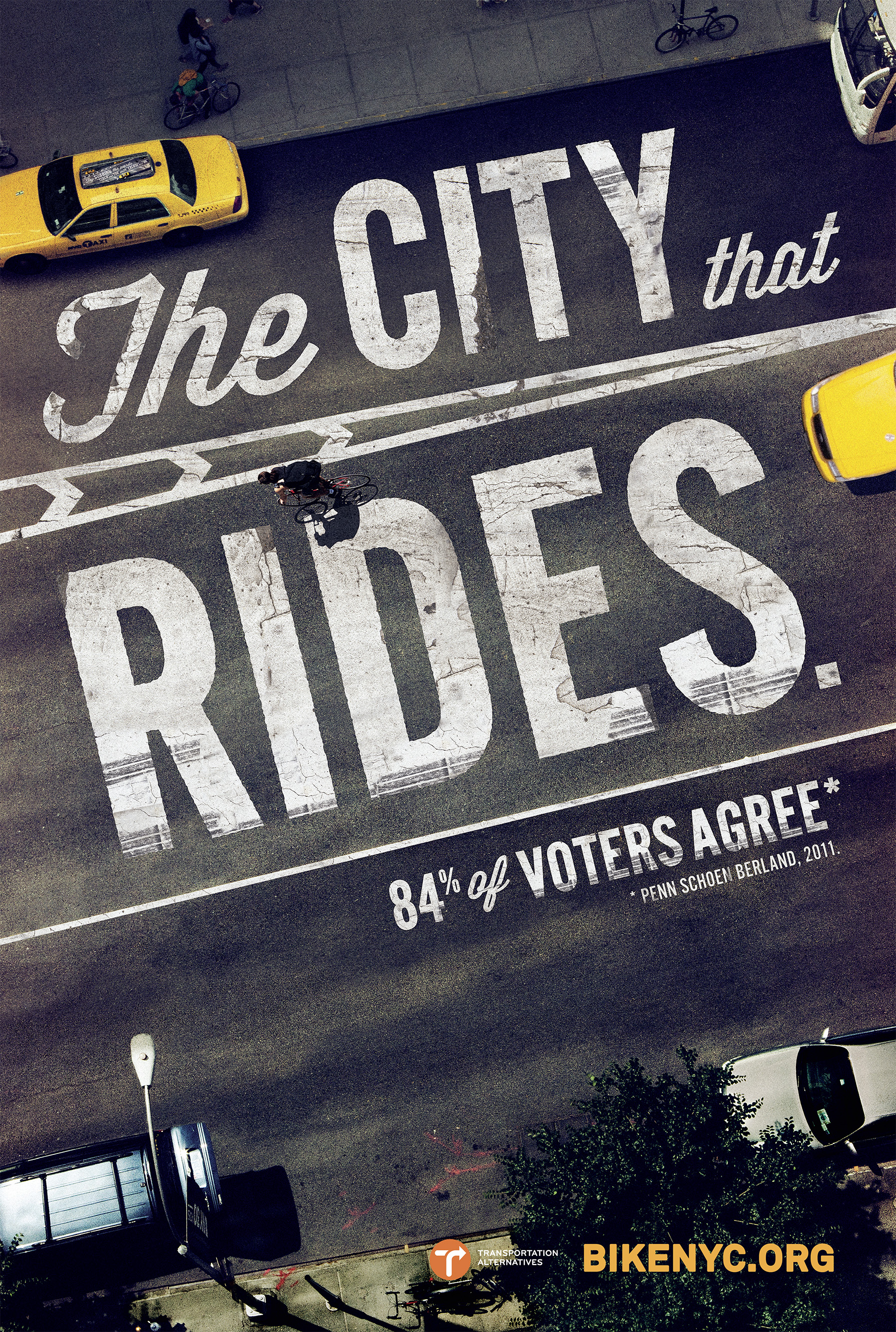Employed by the american army, working for a telephone lab, employed to do research by the army to refine their communication systems and make them more efficient. Where communication broke down in the chain of a command, where it was breaking down and how it was breaking down. They looked into mainly radio communication. Initially limited to that, but its been tank as a communication model for the wider and social sense, visually too.
If you are going to understand any communication act, you need to understand the act of it and the process of it. Communication is more complex than that, and takes place in different mediums. Theres five stages and at each of these points interference may occur.
Graphic design illustrated in the Shannon-Weaver model:
Information source = Client/Brief.
Transmitter = Graphic Designer.
Channel = Design/Medium.
Receiver = Audience.
Destination = The message being communicated.
What sort of things could happen at any of these stages that could effect communication?
Information source issues could be: Client not explaining properly, or brief not being understood.
Transmitter issues could be: Designer not understanding the information/communicates it ineffectively.
Channel issues could be: Print difficulties, coding issues, distribution problems.
Receiver issues could be: Not understanding the message, not getting the message.
Destination issues could be: No interest.
Noise can happen at any step of the process. It interferes with the act of communication.
Examples of noise could be things such as illegibility, distractions, stress from above, etc.
The Shannon-Weaver model categorised problems into three different levels.
Level A - Technical problems: How accurately can the message be transmitted?
Level B - Semantic problems: How precisely is the message conveyed?
Level C - Effectiveness problems: How effectively does the received meaning affect behaviour?
Client not explaining properly. - Level B
Brief not being understood. - Level B
Designer not understanding the information. - Level B
Designer communicates something ineffectively. - Level B
Print difficulties. - Level A - Preparing thoroughly and designing knowing of the limitations of print.
Coding issues. - Level A
Distribution problems. - Level A
Audience not understanding the message. - Level B
Audience not getting the message. - Level B
Audience has no interest. - Level C
Redundancy vs Entropy
Redundancy: The path of least resistance, if you had a telephone line and it would communicate something 100% then it is a redundant line. In graphic design terminology it is high predictability, low information, very understandable, clear as crystal. Like a handshake, toilet symbols, etc.
Entropy: Moments of bleeding out of that channel (communication line). Very much altering a redundant form of communication slightly to be unexpected and informative. This tends to make more of an impact because it is different to generic communication that is expected.
In Graphic Design, redundancy is a tool used frequently to make information more understandable.
Task:
Analyse a piece of visual communication using Shannon-Weaver's model. It could be graffiti, it could be an advert, it might be something from the news. Think of something interesting that there will be a lot to talk about. Look at how the communication breaks down and also the different types of problems. Redundancy and Entropy involved?
The piece of visual communication I have chosen is a poster promoting cycling in New York City. This image would be seen throughout the city on the subways, on bus stops, and near roads/traffic to get the most visibility by people going about their business in the city.
This image appears to be aimed towards people working in the city who spend a large portion of their time travelling through New York to either get home or go to work.
The way this image is communicating it's message is a very direct and personal approach to the generic New Yorker by singling him/her out on the street and specifically talking to him/her "Bike like a New Yorker". This pushes the thought into their head of becoming more involved in the culture of the city and therefore making them feel more patriotic or proud about where they are. This would also influence them to become a part of the bicycle community within the city.
In regards to the Shannon-Weaver model, each section is split into the following:
Information source - Transportation Alternatives.
Transmitter - Mother New York Marketing.
Channel - Billboards and print ads.
Receiver - Citizens of New York City.
Destination - People converting from other transportation methods to cycling within the city.
I think noise that could effect this campaign could be the following:
Noise interrupting the information source - Issues with communication between the client and the designer, the client not being clear with what is wanted, the method of contacting the designer might delay things.
Noise interrupting the transmitter - The designer not being interested in the campaign may affect the results, the designer having a negative view on cycling would create a biased project not in favour of it.
Noise interrupting the channel - graffiti ruining the billboards, the billboards being placed in quiet or constricted areas, more effective advertisements in the same place taking the focal point of passers by.
Noise interrupting the receiver - Being in a rush and not paying attention, busy traffic taking up concentration, other things on the audience's mind.
Noise interrupting the destination - People being lazy, being scared to cycle in the busy city, not enough cycle safety courses/price of them, too much to carry to and from work, or having a stubborn negative view on cycling/cyclists already.
The three different levels of problem: A, B and C are allocated to the following:
Level A - Technical problems: How accurately can the message be transmitted?
Level B - Semantic problems: How precisely is the message conveyed?
Level C - Effectiveness problems: How effectively does the received meaning affect behaviour?
Issues with communication between the client and the designer. - B
The client not being clear with what is wanted. - B
The method of contacting the designer might delay things. - B
The designer not being interested in the campaign may affect the results. - B
The designer having a negative view on cycling would create a biased project not in favour of it. - B
Graffiti ruining the billboards. - A
The billboards being placed in quiet or constricted areas. - A
More effective advertisements in the same place taking the focal point of passers by. - C
Being in a rush and not paying attention. - C
Busy traffic taking up concentration. - C
Other things on the audience's mind. - C
People being lazy. - C
Being scared to cycle in the busy city. - C
Not enough cycle safety courses/price of them. - C
Too much to carry to and from work. - C
Having a stubborn negative view on cycling/cyclists already. - C
I think a good mixture of redundancy and entropy are used within this campaign because there are some very generic and well-known statements and aesthetics involved which everyone will fundamentally know but not think about. But at the same time a slight cheek speaking from a different perspective. This creates a humorous reminder of what happens in the city and would either make you think twice about what cyclists are doing and how to act towards them on the road, or to actually become one of them.
The rest of the images from the series are the following, these also relate to what has been said above:
Further Independent Investigation:
Overall the Shannon-Weaver model is too linear for Graphic Design and would need more aspects involved such as feedback loops and working as more of a circuit rather than a line of five different stages. Maybe I could make my own which would be more relative to Graphic design?
After learning about this model of communication, we discussed it and I came away with the opinion that it didn't best suit graphic design so I thought I'd attempt creating my own model.
In graphic design I think that before the information source, there should be a section for the reason for it, there are several other amendments I'd make to direct it firmly to graphic design. This is the model I created:
1. Message - In graphic design, it all starts with a problem, reason, idea or message to communicate. This is the obvious first stage.
2. Brief - After a message has been established, it is put into writing in the form of a brief so the designer has a clear idea of what he/she is doing.
3. Idea - After the brief has been understood, ideas should then take place. This should then be fed back to the client to be certain the right decisions are being made for them.
4. Design - When an idea is settled, design development begins with sketches and then appropriate finishing, throughout this, feedback should keep it moving in the right direction.
5. Production - The finished body of work will be prepared and produced after design has been completed and approved.
6. Distribution - However the media of this message has been created, it has to be distributed to reach it's target audiences.
7. Receiver - Inspired from the original Shannon-Weaver model, the receivers are the audience coming into contact and interacting with the work.
8. Destination - Finally, the message is identified and understood and should then cause a reaction to the audience it has come into contact with finishing the model.
This was quite interesting dissecting a widely used communication model and converting it into a model directly about graphic design. It seems to not be too bad either but I wouldn't mind any feedback in a comment if anyone sees this.
Research sources used:













Leave your comment